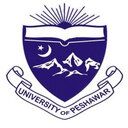Association of the rs1042522 polymorphism with increased risk of prostate adenocarcinoma in the Pakistani population and its HuGE review.
Ključne riječi
Sažetak
Prostate adenocarcinoma is one of the leading causes of cancer related mortality in men but still limited knowledge is available about its associated functional SNPs including rs1042522 (Pro72Arg). The present study was undertaken to explore the association of this SNP with susceptibility to prostate adenocarcinoma along with its structural and functional impacts in the Pakistani population in a case-control study. Three-dimensional structure of human TP53 with Pro72Arg polymorphism was predicted through homology modeling, refined and validated for detailed structure-based assessment. We also carried out a HuGE review of the previous available data for this polymorphism. Different genetic models were used to evaluate the genotypes association with the increased risk of PCa (Allelic contrast: OR=0.0.34, 95%CI 0.24-0.50, p=0.000; GG vs CC: OR=0.17, 95%CI 0.08-0.38, p=0.000; Homozygous: OR=0.08, 95%CI 0.04-0.15, p=0.000; GC vs CC: OR=2.14, 95%CI 1.01-4.51, p=0.046; Recessive model: OR=0.10, 95%CI 0.05-0.18, p=0.000; Log Additive: OR=3.54, 95%CI 2.13-5.89, p=0.000) except the Dominant model (OR=0.77, 95%CI 0.39-1.52, p=0.46). Structure and functional analysis revealed that the SNP in the proline rich domain is responsible for interaction with HRMT1L2 and WWOX. In conclusion, it was observed that the Arg coding G allele is highly associated with increased risk of prostate adenocarcinoma in the Pakistani population (p=0.000).




